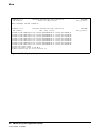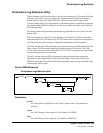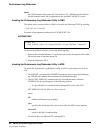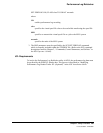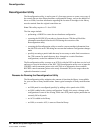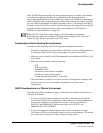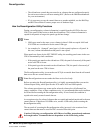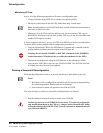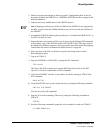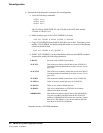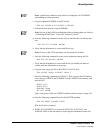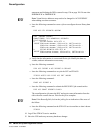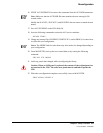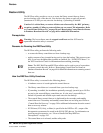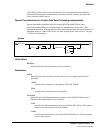
270 VM/HSC 6.0 System Programmer’s Guide
1st ed., 6/30/04 - 312579601
Minimizing I/O Time
Any or all of the following approaches will reduce reconfiguration time:
• Using a solid state disk (SSD) device (such as StorageTek’s 4080)
• Having no scratch tapes in the old CDS, rather than many scratch tapes
Note: Reconfiguration to real DASD with many scratch volumes has been known to
take hours of wall clock time.
• Minimize I/O to the CDS copies by defining only the new primary CDS copy to
RECONFIG. Afterward, copy the new primary CDS copy to the new secondary and
standby CDS copies as needed.
A way to minimize I/O time is to copy all CDSs to an SSD device before reconfiguration.
To use the SSD, create a multiple-step reconfiguration procedure to:
1. Copy the old and new CDSs to the SSD data set. If shadowing is enabled, both the
primary and the secondary must be copied to the SSD data set.
Warning: Do not include CDSDEF or RECDEF statements in the PARMLIB
control statements. (If included, they override the statements for the SSD.)
2. Perform the reconfiguration using the SSD data sets as the old and new CDSs.
3. Copy the new SSD CDSs to the real, new CDSs on DASD. The old CDSs need not
be copied since they have not been updated.
Running a Successful Reconfiguration
While the Reconfiguration utility is in process, the library is unavailable to the user.
Notes:
1. Deviations to the reconfiguration procedure may be required as determined by
the system programmer familiar with the environment.
2. Unless otherwise stated, all operations are on MAINTSTK.
The steps necessary to achieve a successful reconfiguration are as follows:
1. Run the Database Decompile utility to create a new LIBGEN.
Caution: Do not rely on old LIBGENs for accuracy. If you do not perform this
step, modifications made to the CDS (e.g., changes entered from the SET utility)
will not be added to the LIBGEN. Thus, you may encounter a mismatch between
your CDS and LIBGEN.
Reconfiguration



